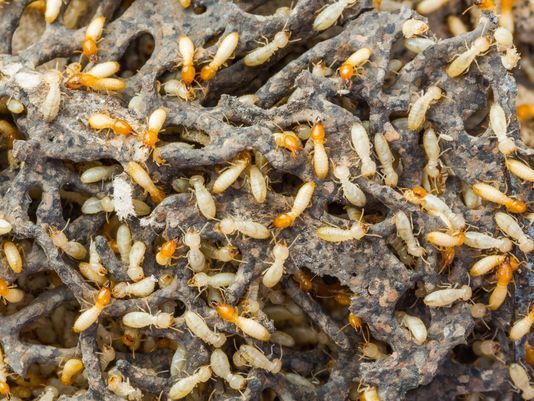Termites are well known for their ability to digest cellulose. This unique ability allows durable plant matter to be digested within termite guts. Termites provide an essential service to the ecosystem by recycling dead plant matter. This may sound surprising, as there is an awful lot of plant matter in the world. Whenever a tree, or any type of vegetation dies in the environment, the dead vegetative matter must be removed promptly. If dead plant matter is not removed promptly, then it would only be a short time before dead plant matter buried everyone in the world. Naturally, termites spend much of their time traveling and burrowing within soil in an effort to locate dead plant matter for consumption. Therefore, it should not be a surprise to learn that termites can infest mud-built structures, such as adobes.
Adobes are little homes that are built from soil and organic forms of matter. Considering this information, you would think that termites would always be attacking adobe structures. Of course, adobe structures are not terribly common anymore, as they were mostly constructed by Native Americans before and shortly after pre-colonial times. However, there are several regions in the world where adobes are still the most economical choice for a home. Adobes are common in developing regions of Africa today, but the most monumental adobe structure is located in Iran. The Arg-e Bam citadel in Bam, Iran is the largest adobe structure in the world, and it is listed as an UNESCO World Heritage Site. Unfortunately, termite infestations may one day bring the entire adobe fortress to the ground.
Several years ago, a region of Iran that contained the adobe citadel became rocked by an earthquake. Panicked researchers from all over the world flocked to the citadel in Bam in order to study the damage that the structure had sustained from the quake. The most notable study to be released after the quake showed that the citadel’s structure had become progressively weaker due to widespread termite infestations. These termite infestations have likely been plaguing the adobe citadel since it was first built during the fifth or sixth century BC. The citadel would likely be able to withstand repeated earthquakes even today, but the extensive termite damage to the structure makes it apt to crumble away as a result of even the most trivial of future seismic disturbances. This research highlighted the manner in which termite-damage and earthquakes both factor into the destruction of manmade structures. The information learned from this study is wisely being applied to other historic adobe structures that still exist in many regions of the world.
Do you think that the interplay between repeated seismic disturbances and structural pest damages pose a risk to urban buildings?

